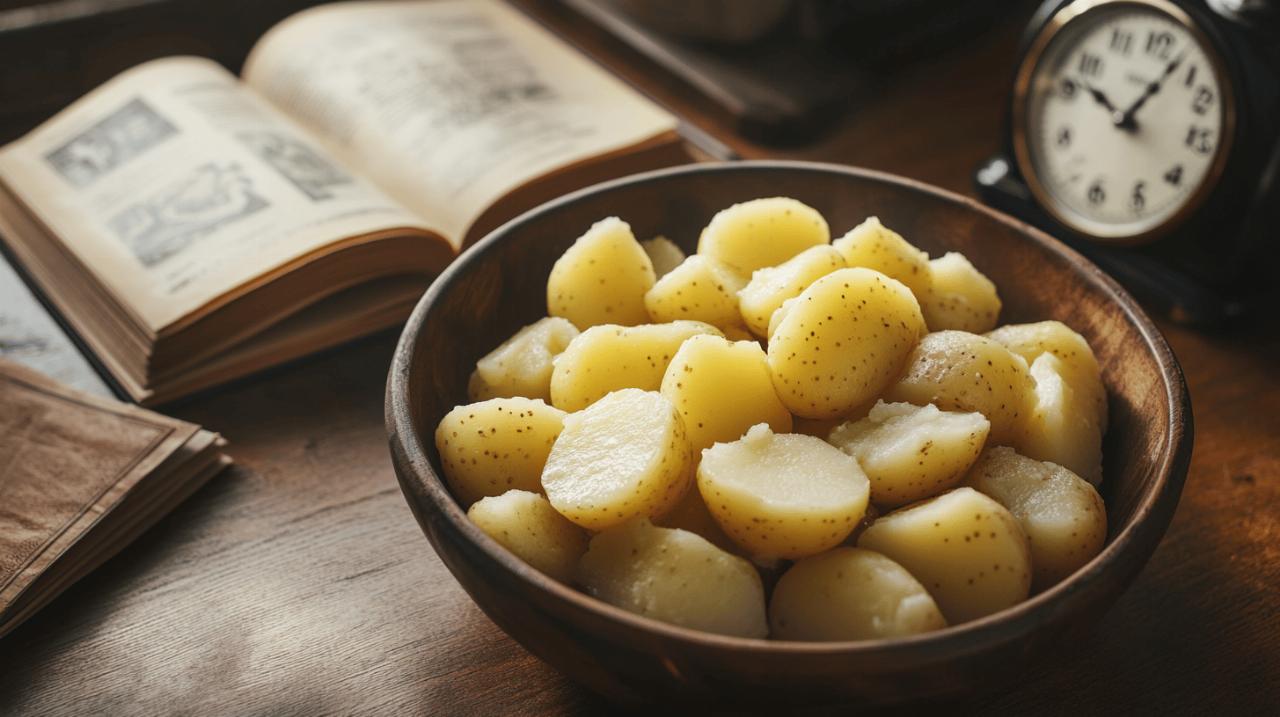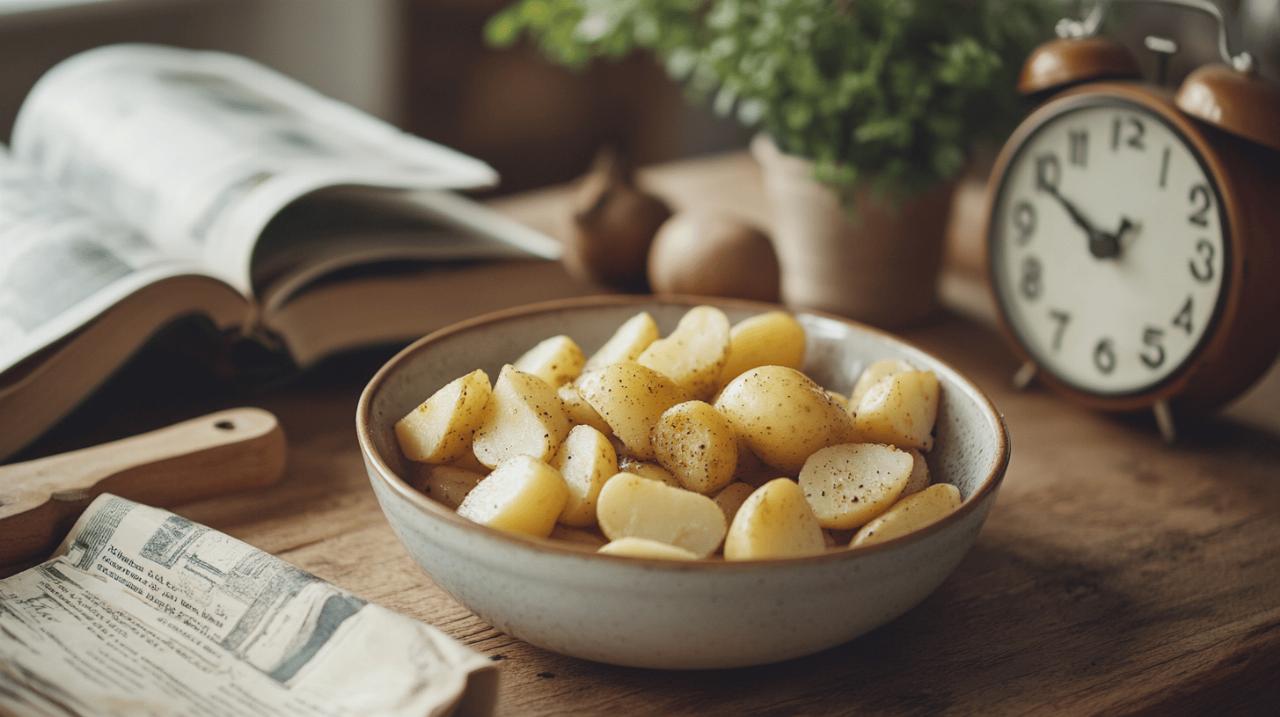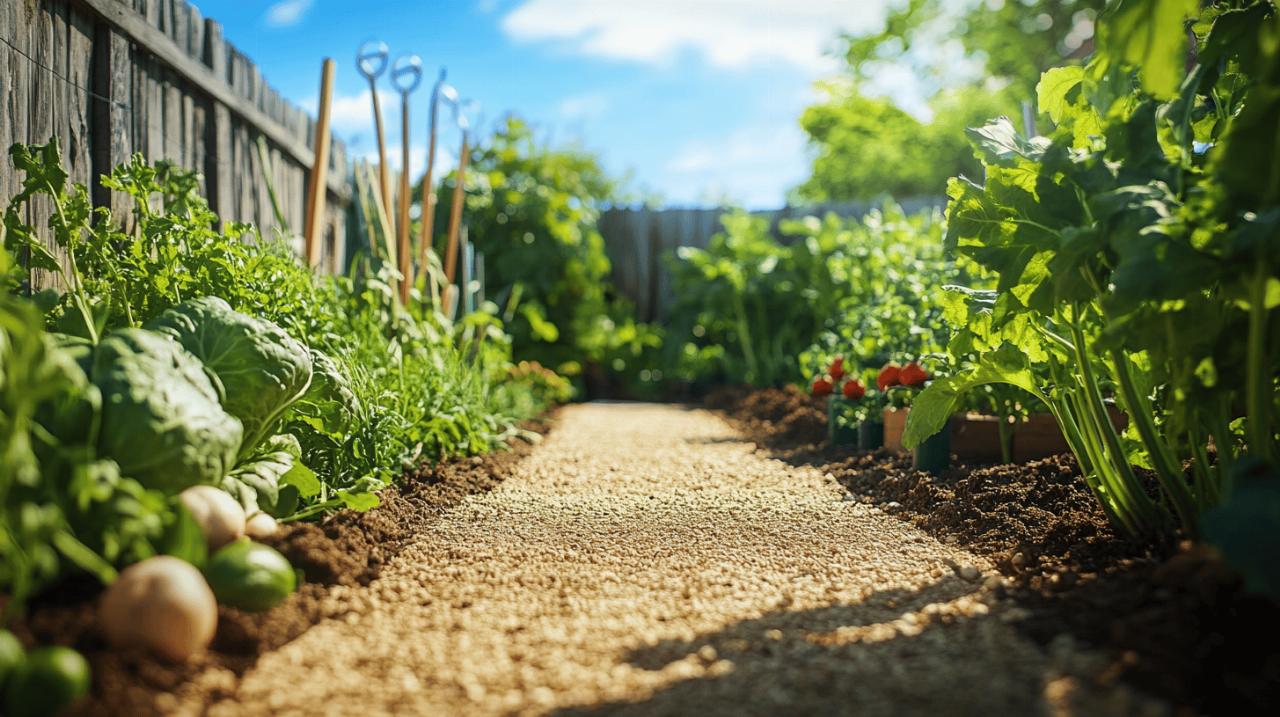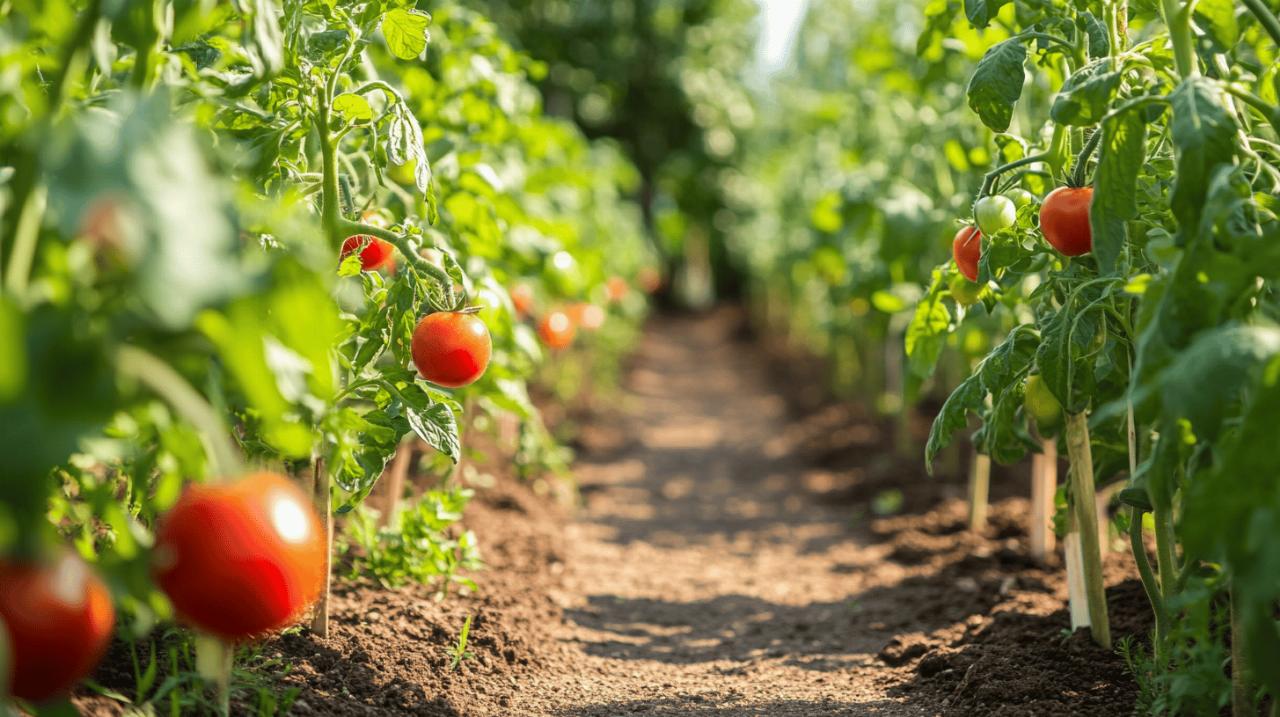Many of us have found ourselves staring at a container of cooked potatoes in the fridge, wondering whether they are still safe to consume. This common kitchen dilemma often arises after preparing a large batch for Sunday roast or a midweek meal, only to have leftovers linger for several days. Understanding the fine line between enjoying a perfectly good spud and risking an unpleasant bout of food poisoning is essential for anyone who values both their health and their culinary efforts. With proper knowledge about storage methods and freshness indicators, you can confidently determine when your cooked potatoes remain perfectly edible and when it is time to bid them farewell.
Understanding the Shelf Life of Cooked Potatoes
How Long Do Cooked Potatoes Last in the Fridge?
When it comes to the longevity of cooked potatoes, the general consensus among food safety experts is that they remain safe to eat for approximately three to four days when stored correctly in the refrigerator. This timeframe applies whether you have roasted, boiled, mashed, or prepared them in any other manner. The key to maximising this shelf life lies in maintaining a consistent refrigeration temperature of around four degrees Celsius or below, which slows down bacterial growth significantly. If you find yourself with a particularly generous amount of leftovers, freezing offers an excellent alternative, extending the usability of your cooked potatoes for up to one year. This makes freezing an ideal solution for meal planning or reducing food waste in your household. The difference in storage duration between refrigeration and freezing is remarkable, highlighting the importance of choosing the right method based on your intended consumption timeline.
Signs your cooked potatoes have gone off
Identifying spoiled cooked potatoes can sometimes be straightforward, but other times the indicators are more subtle. A strong, unpleasant odour is often the most immediate red flag, suggesting that bacterial activity has progressed to a point where consumption would be unsafe. Visible mould, which may appear as fuzzy patches in various colours including green, white, or black, is another unmistakable sign that your potatoes should be discarded immediately. Texture changes also provide valuable clues; if your cooked potatoes have become excessively slimy or mushy beyond their original consistency, this typically indicates spoilage. However, it is worth noting that spoiled cooked potatoes do not always exhibit obvious signs, which is why adhering to the recommended storage timeframe is crucial. Even if they appear and smell acceptable, consuming cooked potatoes beyond the four-day mark increases the risk of foodborne illness. When in doubt, it is always safer to err on the side of caution and dispose of questionable items rather than risk your health.
Proper storage techniques for maximum freshness
The Best Containers and Methods for Storing Cooked Potatoes
Selecting the appropriate storage container and method can significantly impact how long your cooked potatoes remain fresh and safe. Airtight containers made from glass or food-grade plastic are ideal choices, as they prevent moisture loss and shield the contents from absorbing odours from other items in your refrigerator. Before transferring your cooked potatoes into these containers, allow them to cool to room temperature, but do not leave them out for more than two hours to avoid entering the danger zone where bacteria multiply rapidly. Once cooled and sealed, place them promptly in the refrigerator at the correct temperature of four degrees Celsius or below. For those considering freezing, spreading the cooked potatoes in a single layer on a baking tray before transferring them to freezer-safe bags can prevent them from clumping together, making it easier to portion out only what you need later. This method also helps preserve texture better than freezing in a large clump, ensuring that when you reheat them, they retain as much of their original quality as possible.
Common storage mistakes that shorten potato lifespan
Several common errors can dramatically reduce the shelf life of your cooked potatoes and increase the risk of spoilage. One frequent mistake is storing them while still warm, which creates condensation inside the container and promotes bacterial growth. Another misstep involves using containers that are not properly sealed, allowing air to circulate and causing the potatoes to dry out or absorb unwanted flavours from neighbouring foods. Interestingly, while refrigeration is essential for cooked potatoes, the same does not apply to their raw counterparts. Storing uncooked potatoes in the fridge or freezer is not recommended, as the cold temperature converts their starch into sugar, resulting in an undesirable sweet taste and altered texture when cooked. Instead, raw potatoes should be kept in a cool, dark, and dry place where they can last from one week to several months depending on conditions. Mixing up these storage guidelines between cooked and uncooked potatoes is a surprisingly common error that can compromise both safety and quality.
The little-known trick for assessing potato safety
How to Use the Simple Touch and Smell Test
 While adhering to timeframes and storage guidelines is essential, there is a straightforward method that can provide additional reassurance when evaluating whether your cooked potatoes remain safe to eat. The touch and smell test combines two of your most reliable senses to quickly assess freshness. Begin by giving the container a gentle sniff before opening it fully; any off-putting or sour aroma should immediately signal that the contents are no longer suitable for consumption. Once opened, examine the texture by gently pressing a piece with clean fingers or a utensil. Fresh cooked potatoes should maintain their structural integrity and not feel excessively sticky or slimy. This simple yet effective technique has been used by home cooks and culinary professionals alike for generations, serving as a practical supplement to the calendar-based approach. However, it is important to remember that this test should never replace proper storage practices or extend consumption beyond the recommended four-day window, as some harmful bacteria may not produce noticeable changes in smell or texture.
While adhering to timeframes and storage guidelines is essential, there is a straightforward method that can provide additional reassurance when evaluating whether your cooked potatoes remain safe to eat. The touch and smell test combines two of your most reliable senses to quickly assess freshness. Begin by giving the container a gentle sniff before opening it fully; any off-putting or sour aroma should immediately signal that the contents are no longer suitable for consumption. Once opened, examine the texture by gently pressing a piece with clean fingers or a utensil. Fresh cooked potatoes should maintain their structural integrity and not feel excessively sticky or slimy. This simple yet effective technique has been used by home cooks and culinary professionals alike for generations, serving as a practical supplement to the calendar-based approach. However, it is important to remember that this test should never replace proper storage practices or extend consumption beyond the recommended four-day window, as some harmful bacteria may not produce noticeable changes in smell or texture.
What professional chefs know about potato freshness
Those working in professional kitchens have developed keen instincts for assessing ingredient quality, and their approach to cooked potatoes offers valuable insights for home cooks. Experienced chefs emphasise the importance of labelling storage containers with preparation dates, eliminating guesswork and ensuring that items are used within safe timeframes. They also understand that different preparation methods can slightly affect shelf life; for instance, potatoes with added dairy products like cream or butter may spoil more quickly than plain boiled varieties. Another professional tip involves portioning cooked potatoes into smaller containers rather than storing one large batch, as this reduces the number of times the entire quantity is exposed to temperature fluctuations when accessing the fridge. Chefs are particularly vigilant about reheating practices, always ensuring that leftover potatoes reach an internal temperature of approximately seventy-four degrees Celsius to eliminate any bacteria that may have developed during storage. This attention to detail reflects a broader commitment to food safety that home cooks can easily adopt in their own kitchens.
Food safety guidelines and health considerations
Potential risks of consuming spoiled cooked potatoes
The consequences of eating spoiled cooked potatoes extend beyond mere disappointment in taste and can pose genuine health risks. Bacterial contamination, particularly from pathogens such as Clostridium botulinum or Staphylococcus aureus, can lead to food poisoning characterised by symptoms including nausea, vomiting, abdominal cramps, and diarrhoea. These symptoms can range from mild discomfort to severe illness requiring medical attention, depending on the level of contamination and individual susceptibility. Potatoes, being a root vegetable with relatively high moisture content once cooked, provide an environment where bacteria can thrive if storage conditions are inadequate. Even potatoes that appear perfectly fine may harbour harmful microorganisms, which is why strict adherence to recommended storage times is so important. It is worth noting that whilst raw potatoes may develop sprouts containing toxic compounds that should be removed before cooking, properly cooked potatoes present different concerns primarily related to bacterial growth during storage rather than inherent toxicity. Understanding these risks reinforces the importance of treating cooked potatoes with the same care and caution as any other perishable food item in your kitchen.
When to freeze rather than refrigerate cooked potatoes
Deciding between refrigeration and freezing depends largely on your consumption plans and the quantity of cooked potatoes you have prepared. If you anticipate using the leftovers within the next three to four days, refrigeration at four degrees Celsius or below is perfectly adequate and maintains the texture and flavour reasonably well. However, when you have prepared a large batch or know that you will not consume the potatoes within this window, freezing becomes the more sensible option. Freezing at zero degrees Celsius or below can preserve cooked potatoes for up to one year, though it is worth acknowledging that some textural changes may occur upon thawing and reheating. Certain preparations freeze better than others; for example, mashed potatoes typically fare better than whole boiled potatoes, which can become slightly grainy. To optimise freezer storage, ensure the potatoes are completely cooled, portion them into usable quantities, and remove as much air as possible from freezer bags to prevent freezer burn. This approach not only extends the usability of your cooked potatoes but also provides convenient ready-made components for future meals, reducing both waste and preparation time. By understanding when to employ each storage method, you can make informed decisions that balance convenience, quality, and safety in your meal planning routine.





